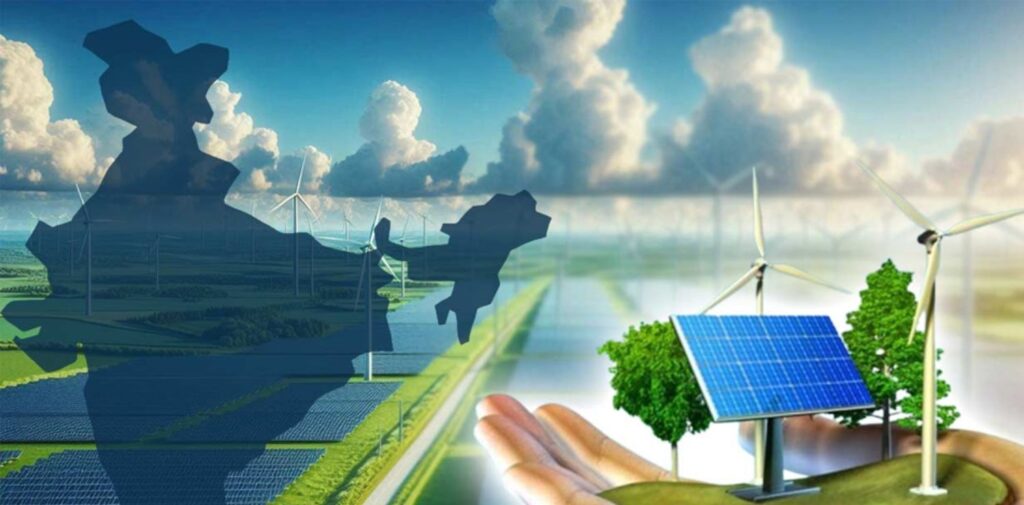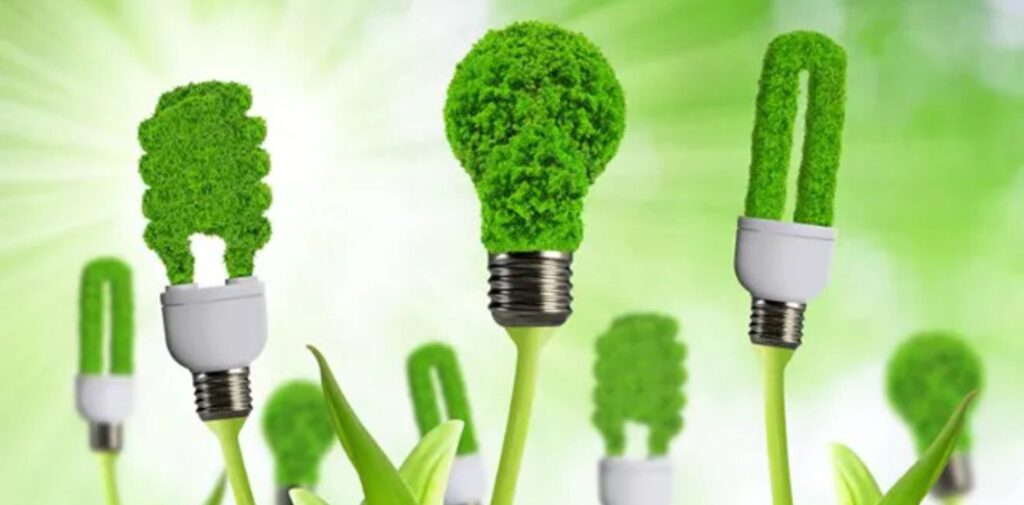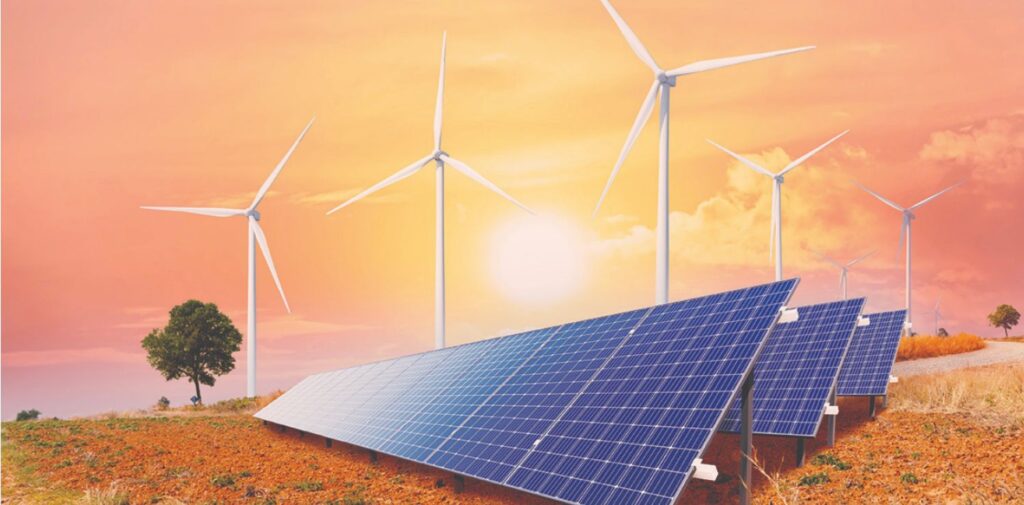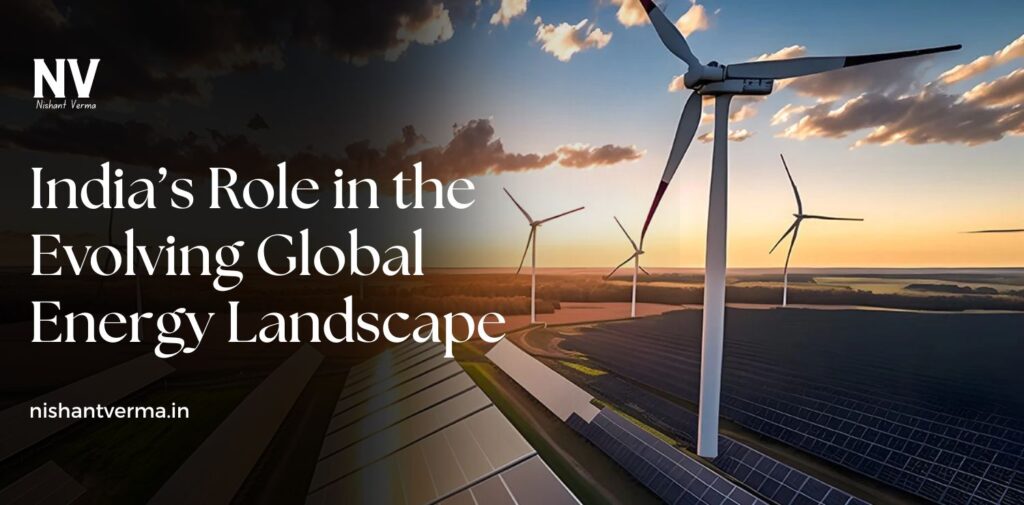The global energy landscape is undergoing a significant transformation, with nations shifting their focus towards sustainable, renewable, and green energy sources to address the challenges of climate change, energy security, and economic growth. India, as the world’s third-largest energy consumer and one of the fastest-growing economies, plays a crucial role in this transition. India’s energy policies, investments, and innovations are not only shaping the country’s future but are also having a far-reaching impact on the global energy sector. This article explores India’s role in the evolving global energy landscape, highlighting its contributions to energy security, renewable energy development, and international energy cooperation.
India’s Growing Energy Demand and Economic Growth
India’s energy demand has been steadily increasing due to its rapid economic growth, urbanization, and a rising population. The country’s energy consumption has expanded significantly in recent decades, and this trend is expected to continue in the future. As India moves towards industrialization and infrastructure development, the need for energy to power factories, transportation systems, homes, and businesses will only grow.
This growing demand for energy presents both challenges and opportunities. On one hand, India faces the challenge of meeting its increasing energy needs without compromising environmental sustainability or causing excessive dependence on imported fossil fuels. On the other hand, this demand also presents an opportunity for India to innovate in the energy sector, create green jobs, and contribute to global energy security.
India’s energy policies have recognized the importance of balancing economic growth with environmental concerns. This has led to a shift towards diversifying energy sources, with an increasing focus on renewable energy and cleaner technologies.

India’s Commitment to Renewable Energy
India has made substantial progress in recent years in developing renewable energy sources, such as solar, wind, and hydroelectric power. The country is already one of the largest producers of renewable energy globally, and its commitment to expanding this sector continues to grow.
One of India’s landmark initiatives is the National Action Plan on Climate Change (NAPCC), which outlines the country’s approach to combating climate change and promoting sustainable development. As part of this plan, India has set ambitious targets for renewable energy capacity. The government aims to achieve 175 gigawatts (GW) of renewable energy capacity by 2022, including 100 GW from solar energy, 60 GW from wind energy, and the remainder from biomass and hydroelectric power. India has also committed to achieving 500 GW of non-fossil fuel capacity by 2030, which will be a significant step in reducing the country’s carbon footprint.
India’s solar energy sector, in particular, has experienced rapid growth. The country is now home to one of the largest solar power markets in the world, with massive solar parks being developed across the country. With the combination of abundant sunlight, favorable government policies, and falling costs of solar panels, India has emerged as a leader in solar energy production. Similarly, India’s wind energy sector is also expanding, with several wind farms installed along the coastlines and in the interior regions.
Through these efforts, India is not only reducing its dependence on coal and other fossil fuels but is also making a significant contribution to the global renewable energy transition. As a result, India’s role in the global energy market is evolving, with the country increasingly recognized as a leader in renewable energy development.

India’s Focus on Energy Efficiency and Innovation
Energy efficiency is a key aspect of India’s strategy for managing its growing energy demands. The government has implemented various policies and initiatives aimed at improving energy efficiency across sectors such as industry, transportation, and residential buildings. One such initiative is the Perform, Achieve, and Trade (PAT) scheme, which targets energy-intensive industries and encourages them to adopt energy-saving technologies. This program has resulted in substantial energy savings and a reduction in emissions from industrial sectors.
Additionally, the Bureau of Energy Efficiency (BEE) has been working on various programs to promote the use of energy-efficient appliances, such as LED lighting, energy-efficient refrigerators, and air conditioners. The government’s UJALA scheme, which focuses on the distribution of LED bulbs at affordable rates, has had a remarkable impact on reducing energy consumption in households across the country.
India’s innovation in energy technologies is also making waves on the global stage. The country is actively involved in developing advanced energy storage solutions, smart grids, and electric vehicles (EVs). India’s growing electric vehicle market is an important step toward reducing dependence on fossil fuels and lowering greenhouse gas emissions. The government has introduced several initiatives to promote EV adoption, including subsidies, infrastructure development, and tax incentives.
India’s efforts to promote energy efficiency and innovation are helping the country become more energy-secure and reduce its carbon emissions, contributing to the global fight against climate change.
India’s Role in Global Energy Cooperation
As a major player in the global energy market, India is actively participating in international energy cooperation to address global energy challenges. India is a member of various international organizations, including the International Energy Agency (IEA) and the International Solar Alliance (ISA), which is an initiative aimed at promoting solar energy among tropical countries.
The International Solar Alliance, co-founded by India in 2015, aims to harness solar power and facilitate the deployment of solar energy technologies across countries in the Global South. The ISA is helping countries with vast solar potential access financing, technology, and expertise to scale up their solar energy infrastructure. India’s leadership in the ISA highlights its commitment to global energy cooperation and its determination to promote clean energy for all.
India is also part of the BRICS (Brazil, Russia, India, China, South Africa) grouping, which facilitates collaboration among emerging economies on energy-related matters. Through BRICS, India engages in dialogue on energy security, sustainable development, and the promotion of renewable energy sources. India’s participation in global energy cooperation has allowed it to share knowledge, attract investments, and align its policies with global energy trends.
Furthermore, India’s partnership with neighboring countries, such as Bangladesh and Nepal, in the field of energy cooperation has led to the development of cross-border energy trade. This collaboration has helped India establish itself as an energy hub in the region, enabling the exchange of electricity and renewable energy resources with its neighbors.

India’s Energy Challenges and Future Prospects
While India’s contributions to the global energy landscape are significant, the country also faces several challenges in meeting its energy demands in an environmentally sustainable manner. India remains heavily dependent on coal, which accounts for a large portion of its electricity generation. Coal is not only a major source of carbon emissions but also poses a challenge to air quality and public health. Reducing reliance on coal and transitioning to cleaner energy sources will be a critical task for India in the coming years.
Another challenge is the financing of renewable energy projects. While the costs of renewable technologies have fallen dramatically, significant investments are still required to scale up infrastructure and meet the country’s renewable energy targets. India will need to attract private and foreign investments to build the necessary infrastructure for solar, wind, and energy storage projects.
Moreover, India’s energy infrastructure, particularly its transmission and distribution networks, needs to be modernized to accommodate the growing share of renewable energy. The integration of solar and wind power into the grid requires advanced energy storage solutions and smart grids that can balance supply and demand.
Despite these challenges, India’s role in the global energy transition remains crucial. The country’s ambitious renewable energy goals, commitment to energy efficiency, and leadership in international energy cooperation position it as a key player in shaping the future of global energy.
Conclusion: Global Energy Landscape
India’s role in the evolving global energy landscape is multifaceted and growing. As one of the world’s largest energy consumers and a leader in renewable energy development, India is making significant contributions to the global transition towards sustainable and clean energy. By focusing on renewable energy, energy efficiency, technological innovation, and international cooperation, India is positioning itself as a key player in addressing global energy challenges. While challenges remain, India’s energy policies and initiatives are helping to shape the future of global energy, making it an essential partner in creating a sustainable and energy-secure world.




